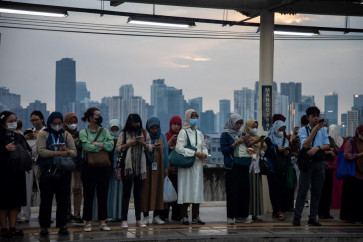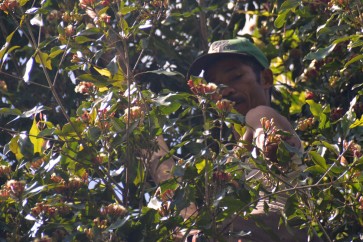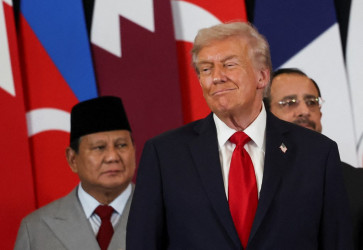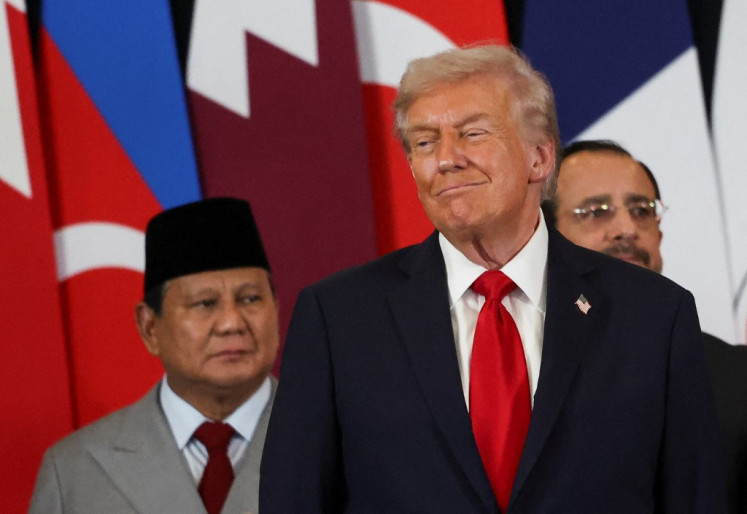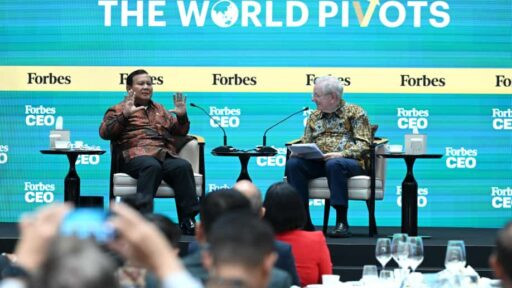Popular Reads
Top Results
Can't find what you're looking for?
View all search resultsPopular Reads
Top Results
Can't find what you're looking for?
View all search resultsJakarta covers up smelly ‘Black River’ for Asian Games
Going clean: A Jakarta Sanitation Agency worker removes waste from a polluted river in Kemayoran, Central Jakarta, on Friday
Change text size
Gift Premium Articles
to Anyone
G
oing clean: A Jakarta Sanitation Agency worker removes waste from a polluted river in Kemayoran, Central Jakarta, on Friday. The Jakarta administration has covered the river, which runs next to the Kemayoran athletes village with a black net to contain the strong odor. (JP/Seto Wardhana)
The Jakarta administration has decided to cover the murky Sentiong River, nicknamed Black River, with a giant black nylon net amid concerns it would be an eyesore and too smelly for foreign athletes during the Asian Games in August.
According to Jakarta Water Resources Agency official Supriyono, the river has to be covered up as it is located on the way to the newly built athletes village in Kemayoran, Central Jakarta.
“We covered it, so that the dark, polluted water will be hidden from the view of international athletes,” he said as quoted by kompas.com on Thursday, adding that the effort was also expected to reduce the unpleasant smell emerging from the river.
President Joko “Jokowi” Widodo and Jakarta Governor Anies Baswedan noticed the smell from the river during a visit to the athletes village in February and agreed to find a way to reduce the stench.
The city administration has used aerators and nanobubble technology to clean the river, but to no avail.
It previously said that the water’s foul smell came from unprocessed waste dumped by the tempeh and tofu industries.
Anies said on Friday that the administration had taken measures to monitor these factories to prevent them from throwing more waste into the river.
All 13 rivers flowing through the capital are so polluted that the city’s water operators have had to source their raw water supply from the Citarum River — dubbed the world’s dirtiest river by Western media but considered cleaner than other Jakarta rivers.
These rivers have dozens of tributaries, some smellier and murkier than the other.
In March, the media reported that untreated factory and household waste had produced white foam that covered the surface of the East Flood Canal (BKT) in Marunda, North Jakarta.
The foam, which flows from the Weir 3 Marunda sluice gates to the sea, is reportedly a common sight during the rainy season..
Jakarta does not have sufficient wastewater treatment plants (IPAL) to handle all of its households, and nor do cities located upstream of the capital, such as Bogor in West Java and South Tangerang in Banten,
Millions of houses end up dumping their untreated waste water into nearby rivers.
The capital’s sole IPAL is located at the Setiabudi reservoir, South Jakarta, and it treats about 2 percent of Jakarta’s sewage.
The government has long planned to develop the Jakarta Sewerage System (JSS), designed to process household waste at IPAL before the water is pumped into rivers.
The system is expected to reduce pollution in rivers, provide clean water and stop residents from pumping groundwater, which has caused land subsidence in the city.
However, development on the JSS, which was scheduled to kick off last year, has been postponed to 2019 for various reasons.
According to PD Pal Jaya president director Subekti, the sewage company was in the process of creating detailed engineering designs (DED) of the system for one out of the planned 15 zones.
“We hope that the DED can be finished by mid-2019 and the construction can begin in 2020. The project is set to finish in 2026,” Subekti said,.
He added that the project would be time consuming and required a significant budged as pipes for the system must be placed 20 to 30 meters underground.
“Finding investors interested in the project might also be challenging, as it might not generate much profit,” Subekti said.


